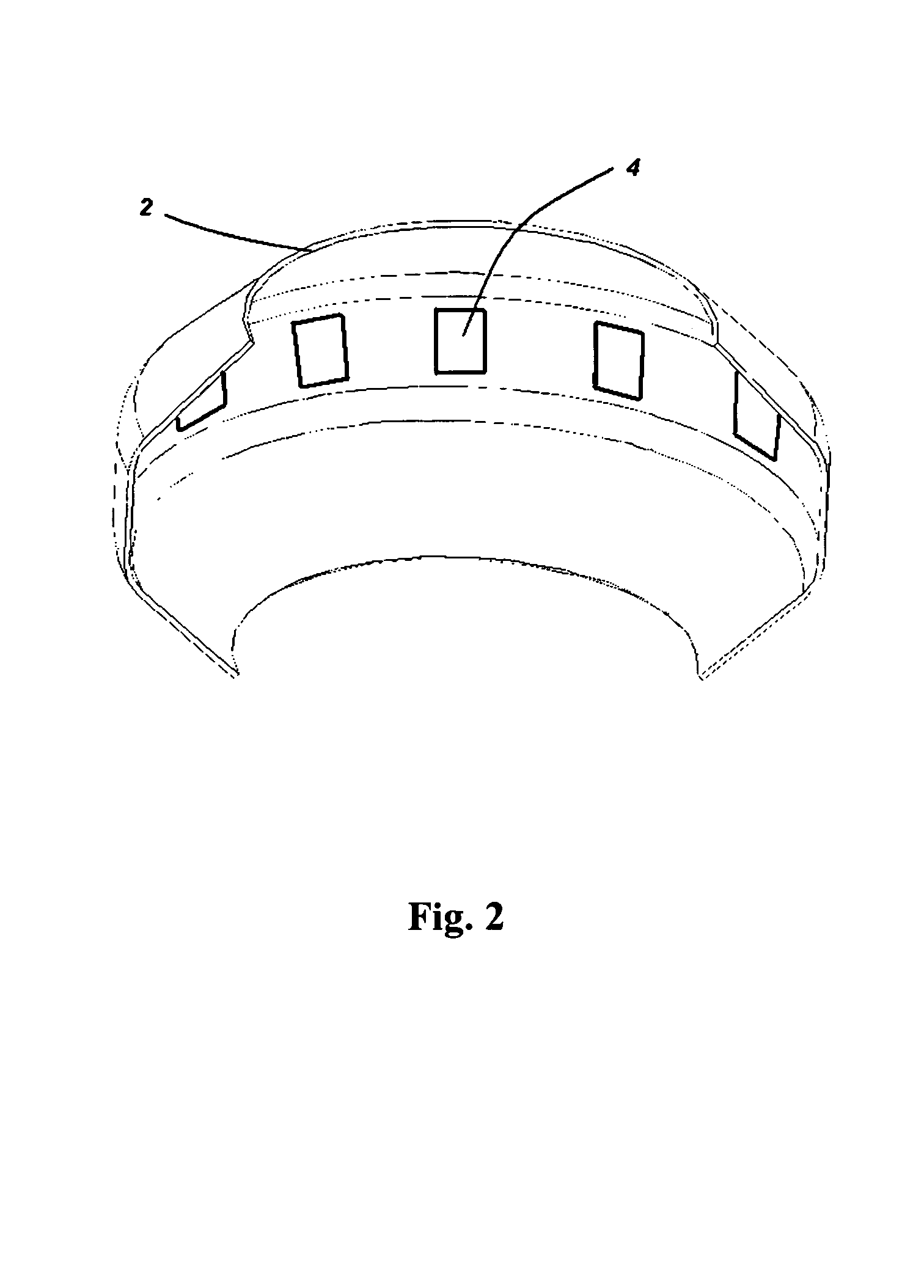Infant respiratory monitoring system
a technology for monitoring systems and infants, applied in the field of infant respiratory monitoring systems, can solve the problems of not directly measuring or lacking and achieve the effect of monitoring the breath of infants
- Summary
- Abstract
- Description
- Claims
- Application Information
AI Technical Summary
Benefits of technology
Problems solved by technology
Method used
Image
Examples
Embodiment Construction
[0015]DRAWING 1 shows one embodiment of an infant respiration monitoring system includes; respiratory antenna 2, RH sensors 4, flexible tube 6, controller 7, and an optional remote receiver 8. In DRAWING 1, an infant 1 respiration 3 is directed by the preferred shape of the respiratory antenna 2 into the RH sensors 4 placed strategically in of the respiratory antenna 2. The respiratory antenna 2 is optimally positioned to capture the infant respiration 3 by adjustments made in the flexible tube 6. The relative humidity from infant 1 respiration 3 is measured by the RH sensors 4 and processed by the controller 7.
[0016]DRAWING 2 shows the preferred locations of the RH sensors 4 on the respiratory antenna 2. In this embodiment, the sensors 4 are placed into an arc following the possible movement of the infant's nose as the head may rotate from side to side.
[0017]DRAWING 3 shows the location of the reference RH sensor 5 on the backside of the preferred shape of the respiratory antenna 2...
PUM
 Login to View More
Login to View More Abstract
Description
Claims
Application Information
 Login to View More
Login to View More - R&D
- Intellectual Property
- Life Sciences
- Materials
- Tech Scout
- Unparalleled Data Quality
- Higher Quality Content
- 60% Fewer Hallucinations
Browse by: Latest US Patents, China's latest patents, Technical Efficacy Thesaurus, Application Domain, Technology Topic, Popular Technical Reports.
© 2025 PatSnap. All rights reserved.Legal|Privacy policy|Modern Slavery Act Transparency Statement|Sitemap|About US| Contact US: help@patsnap.com



